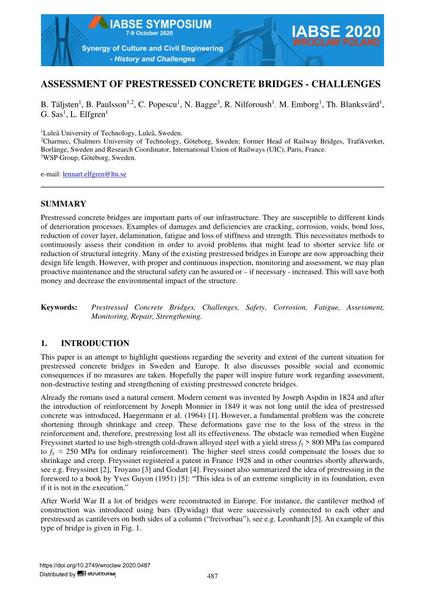Assessment of Prestressed Concrete Bridges - Challenges

|
|
|||||||||||
Détails bibliographiques
| Auteur(s): |
B. Täljsten
B. Paulsson C. Popescu N. Bagge R. Nilforoush M. Emborg Th. Blanksvärd G. Sas L. Elfgren |
||||
|---|---|---|---|---|---|
| Médium: | papier de conférence | ||||
| Langue(s): | anglais | ||||
| Conférence: | IABSE Symposium: Synergy of Culture and Civil Engineering – History and Challenges, Wrocław, Poland, 7-9 October 2020 | ||||
| Publié dans: | IABSE Symposium Wroclaw 2020 | ||||
|
|||||
| Page(s): | 487-494 | ||||
| Nombre total de pages (du PDF): | 8 | ||||
| Année: | 2020 | ||||
| DOI: | 10.2749/wroclaw.2020.0487 | ||||
| Abstrait: |
Prestressed concrete bridges are important parts of our infrastructure. They are susceptible to different kinds of deterioration processes. Examples of damages and deficiencies are cracking, corrosion, voids, bond loss, reduction of cover layer, delamination, fatigue and loss of stiffness and strength. This necessitates methods to continuously assess their condition in order to avoid problems that might lead to shorter service life or reduction of structural integrity. Many of the existing prestressed bridges in Europe are now approaching their design life length. However, with proper and continuous inspection, monitoring and assessment, we may plan proactive maintenance and the structural safety can be assured or – if necessary - increased. This will save both money and decrease the environmental impact of the structure. |
||||
| Mots-clé: |
ponts en béton précontraint renforcement
|
||||
